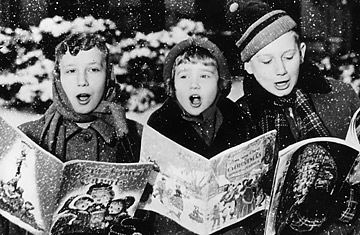Listen to this amazing acapella version of Carol of the Bells by the chart-topping musical group, Pentatonix.
Thousands of years ago pagan songs were sung at Winter Solstice celebrations in Europe. The Winter Solstice is the shortest day of the year, typically around December 22nd. This involved people dancing around stone circles because the word “carol” originally meant “song or dance of joy”. Although these pagan tunes were written and sung year round for each season, the continuation of singing at Christmas truly stood the test of time.
The intervening of Christians transformed the pagan lyrics into Christian ones, and it wasn’t too long until composers all over Europe began to catch onto this trend. Almost all carols were originally written in Latin. People then began to lose interest in carols and Christmas all together in the 1200’s. In 1223 St. Francis of Assisi’s Nativity Plays in Italy started to draw people back into Christmas because of its storytelling and universal languages. Unfortunately, in 1647 Christmas was banned by the Puritans in England, but the carols stayed alive. They were sung behind closed doors until the resurgence of the celebration was allowed. Carols everywhere are now obviously accepted during this spirited time of the year.
Fun fact: Christmas carols were originally sung in homes rather than churches!
What are your thoughts on holiday songs? Feel free to leave a comment below.

